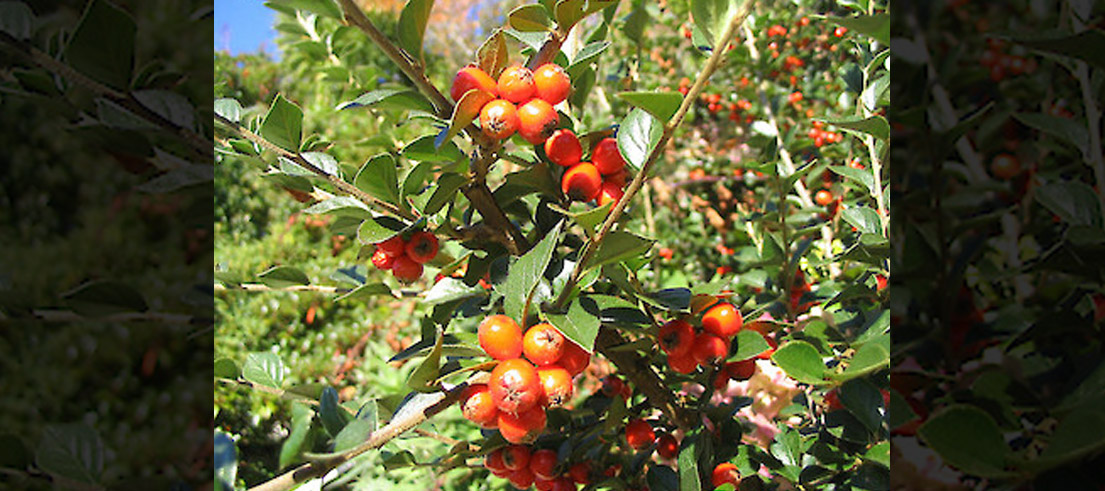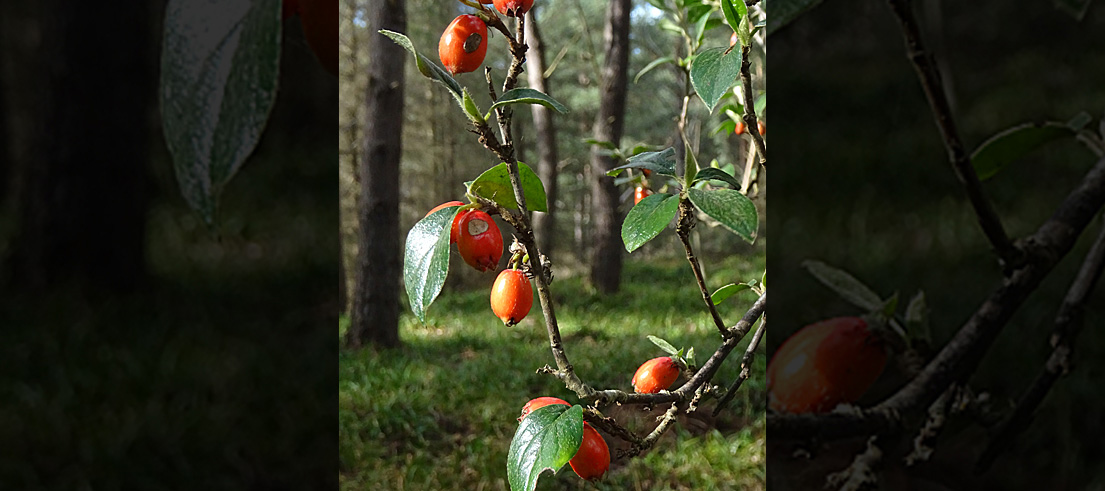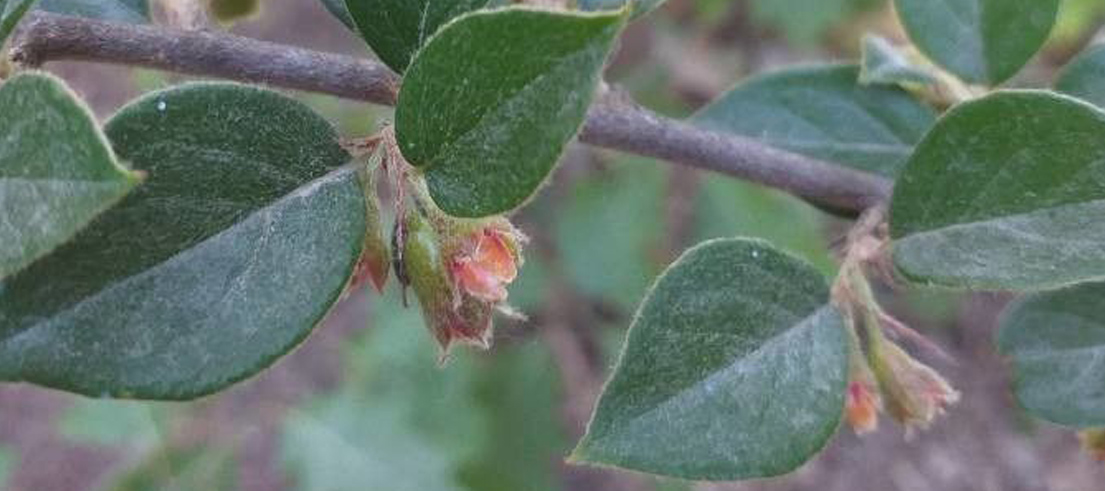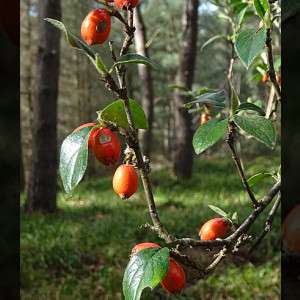Cotoneaster is an evergreen shrub less than 5m tall with bright red or orange berries. It outcompetes native species and prevents seedling establishment.
Description
- Leaves are shiny and pale green.
- Young stems are covered in hairs but become hairless and a dark red-purple as they mature.
- Flowers are small, white-pink and in clusters in late spring and early summer.
- Berries are red or orange and grow in bunches from late summer to late winter.
- There are many other similar-looking Cotoneaster species that are closely related and are also considered invasive plants.
- Dispersed by birds moving seeds. Human-mediated dispersal through dumping of garden waste and deliberate plantings.
- Habitats include gardens, shrublands, riverbeds, coastal forests, cliffs, forest margins, roadsides, grasslands, plantations, and wastelands.
What you need to know
Form dense thickets, outcompetes other plant species and preventing seedling establishment.
Management approach
Cotoneaster is an unwanted organism regulated under the National Plant Pest Accord.
National Pest Plant Accord (NPPA)
The NPPA prevents the sale, distribution and propagation of specified pest plants within Aotearoa/New Zealand and is administered by the Ministry for Primary Industries (MPI).
Rules
Any species declared a pest, including unwanted organisms, cannot be sold or be in a place where plants are being sold. Pest plants cannot be propagated, bred, multiplied, communicated, released, caused to be released, or otherwise spread.
See the MPI website for more information on the NPPA.
Consider removing this invasive species from your property and consult your local council for appropriate disposal. There are at least 11 Cotoneaster species known to be invasive. Consider lower-risk alternatives for your garden, such as native plants.
Control
Site Management
Follow up treated areas three times per year. Encourage natural regeneration of native plants or replant treated areas where possible after two to three treatments to establish dense ground cover and minimise reinvasion.
Physical control
Dig or pull plants out.
Plant parts requiring disposal: Seeds.
Contact your local council for appropriate disposal locations.
Chemical control
No qualifications: Cut stump and paste freshly cut base of stems with metsulfuron gel.
Certified handler/experienced agrichemical user: Cut stump and spray freshly cut base with 5g metsulfuron-methyl per 1L of water. Foliar spray with 5g metsulfuron-methyl per 10L of water and 20ml penetrant.
Caution: When using any herbicide or pesticide please read the label thoroughly to ensure that all instructions and safety requirements are followed.
Biological control
Biological control is currently not available for this species.






